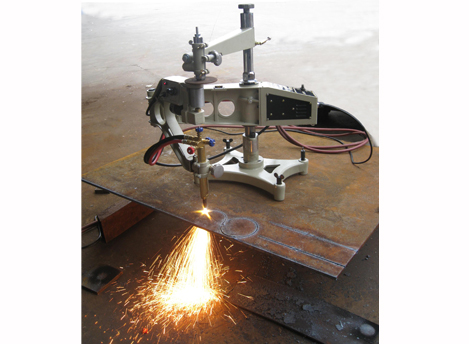Experienced operators operating well-maintained plasma cutting equipment can save countless plant downtime and thousands of dollars in operating expenses, thereby bringing higher profits to your cutting business and company. This issue of Cutting Welding Kit suppliers continues to share with you the following common mistakes to avoid in plasma cutting:
1. Cutting speed is too fast or too slow
Too fast or too slow cutting speed will cause cutting quality problems. If the speed is too slow, the cutting piece will produce "slow slag" (large slag bubbles accumulated along the bottom edge). Too slow speed will also lead to wide slit and too much slag on the top. If the speed is too fast, the arc will lag into the slit, resulting in beveled edges, narrow slits and the accumulation of small, hard slag beads along the bottom edge of the workpiece. High speed slag is difficult to remove. Keeping the correct cutting speed produces the least amount of slag. As a result, the edge is clean, and it can enter the next step of manufacturing process directly without secondary processing.
2. "Arc stretching"
If the arc must be "stretched" (deviated from the vertical straight cutting path) to find the workpiece, arc stretching may occur at the beginning and end of cutting. Arc stretching causes the arc to cut into the nozzle sidewall. When the edge arc is started, the nozzle hole shall be placed in the square center position on the edge of the workpiece to start the plasma arc. It is important to keep this in mind in the punch / plasma operation (off the vertical straight cutting path) where the workpiece is to be found. Arc stretching causes the arc to cut into the nozzle sidewall. When the edge arc is started, the nozzle hole shall be placed in the square center position on the edge of the workpiece to start the plasma arc. This must be kept in mind during press / plasma operations where the arc starts at the perforation. In such applications, the arc should be started from the edge rather than the center of the perforation. If the cutting torch has been programmed to deviate from the plate when the arc is open, or if the "lead out" follows the cut of the last cut metal, arc stretching may also occur at the end of the cut. This phenomenon can be minimized by determining the sequence of arc closing signal and programming the outgoing line.

3. Cutting torch collision
"Curling" and collision will cause irreparable damage to your cutting torch. By programming the graphic cutting system to move around the cutting part instead of over it, the collision between the cutting torch and the workpiece can be avoided. In addition, the torch height sensor can also prevent the torch from colliding by compensating the material change. However, a voltage controlled raise controller may not be able to protect the torch. For example, if the cutting torch follows the cutting seam for too long, "cutting torch forward" usually occurs at the end of the cutting. (insert the cutting torch height adjustment controller in front to compensate for the voltage increase caused by arcing). This phenomenon can be minimized by carefully programming the functions of the outgoing line and the torch height adjusting controller. Finally, disconnecting the torch fixture can help prevent damage to the torch in the event of a collision.
Our company also provides Plasma Arc Welding Machine.






